Text
We are 100 percent confident that sea cucumbers do not like soda. 👎🏼
The human imprint of pollution is now evident in all marine ecosystems, including the deepest parts of our ocean. The impacts of deep-sea trash are magnified by the near-freezing water, lack of sunlight, and low oxygen concentrations that discourage the growth of bacteria and other organisms that can break down debris. Under these conditions, our garbage might persist for decades.
52 notes
·
View notes
Video
The most terrifying thing in the deep sea. 😱
The human imprint of pollution is now evident in all marine ecosystems, including the deepest parts of our ocean. The impacts of deep-sea trash are magnified by the near-freezing water, lack of sunlight, and low oxygen concentrations that discourage the growth of bacteria and other organisms that can break down debris. Under these conditions, our garbage might persist for decades.
212 notes
·
View notes
Photo

Filipino researchers visited the Emden Deep, also known as the Galathea Deep or Galathea Depth, the third deepest trench on the ocean’s planet, more than 10,000m below the surface and found plastic debris.
source: Channel News Asia
#marine debris#plastic pollution#benthic debris#galathea deep#emden deep#galathea depth#marine trench#filipina#science#pollution
9 notes
·
View notes
Photo
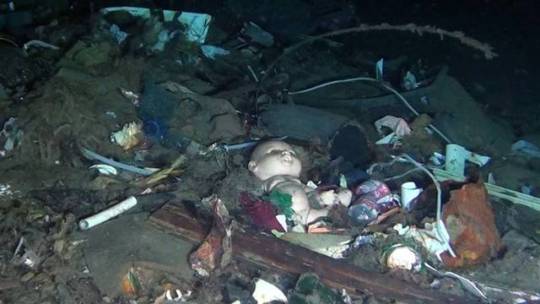
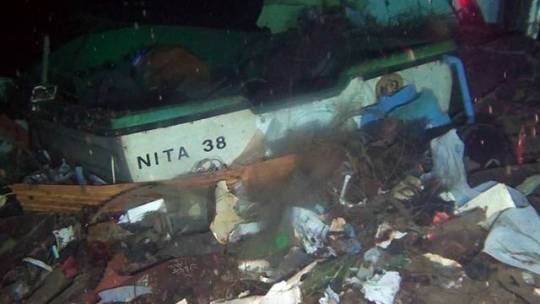
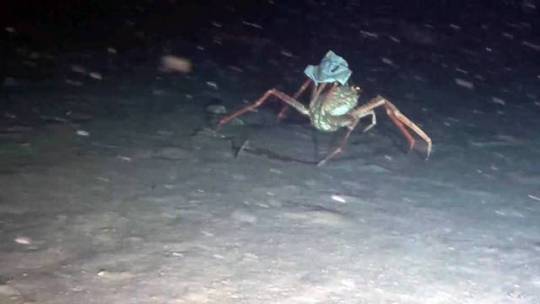

HUGE DUMP FOUND AT THE BOTTOM OF THE MEDITERRANEAN
Images obtained by an underwater exploration robot at the seafloor of the Strait of Messina in Italy, have revealed the largest concentration of garbage ever recorded in deep waters anywhere in the world.
The photos extracted from ROV video footage show examples of benthic litter accumulations observed within channels in the Messina Strait, including: bricks, tires, clothes and large metallic objects, small and large mounds, sometimes formed around large items such as a buried car and a sunken boat.
Litter is patchy but pervasive on all surveyed channels, reaching densities up to 200 items in 10 meters of observation. Such impressive amount of litter can be explained by submarine canyons acting as carrier of marine litter from shallow water to the deep sea and a strong urbanization of the coastal area.
Reference (Open Access): Pierdomenico et al., 2019. Massive benthic litter funnelled to deep sea by flash-flood generated hyperpycnal flows. Scientific Reports.
#benthic marine litter#benthic debris#Benthic litter#deep sea#mediterranean#italy#science#biology#marine biology
185 notes
·
View notes
Photo
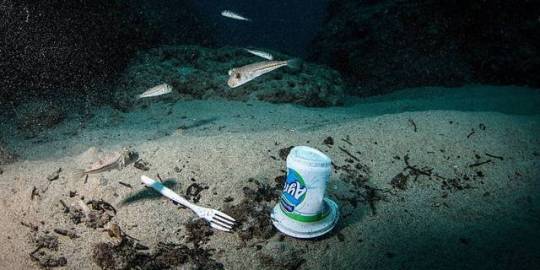
Fishes swiming near plastic debris at the Samandag Cevlik Akcay dive site off the coast of Samandag, in Hatay province, Turkey.
Photo by Şebnem Coşkun/Anadolu
56 notes
·
View notes
Photo
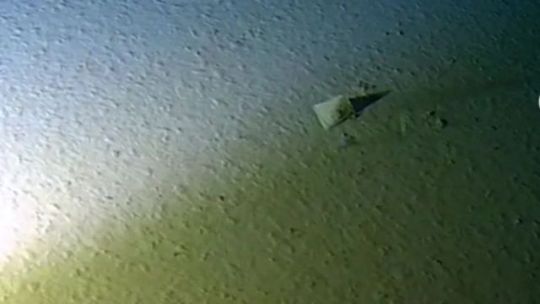
A plastic bag found by Victor Vescovo, when he descended nearly 10,927m (nearly 6.8 miles) to a point in the Pacific Ocean's Mariana Trench, one of the deepest part of the ocean. He also found a sweet wrappers.
Two decades ago, Kaikō, a remotely operated underwater vehicle (ROV) built by the Japan Agency for Marine-Earth Science and Technology (JAMSTEC) recorded a plastic bag at 10,898 meters deep in the Mariana Trench.
#marine debris#Benthic litter#benthic debris#deep sea#mariana trench#science#biology#marine biology#Pacific Ocean
258 notes
·
View notes
Photo
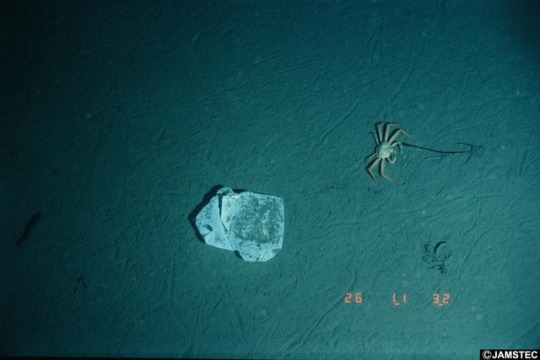
A deep-sea red snow crab (Chionoecetes japonicus) close to a plastic bag in Toyama Bay in the Sea of Japan.
Image courtesy of Japan Agency for Marine-Earth Science and Technology (JAMSTEC).
#marine debris#science#deep sea#japan#Toyama Bay#Chionoecetes japonicus#red snow crab#crustacean#animals
61 notes
·
View notes
Video
Several sea anemones settled on a heap of plastic bags and cans at 3848m depth in the Nankai Trough, a submarine trough located south of the Nankaidō region of Japan's island of Honshū.
Video shot in 2003/ JAMSTEC
#VIDEO#jamstec#science#marine debris#benthic marine litter#marine litter#japan#pacific#Benthic litter
31 notes
·
View notes
Photo
Surprising, this moment was observed by ROV KAIKO on May 20th, 1998, more than 20 yeas ago.

PLASTIC BAG RECORDED AT BOTTOM OF MARIANA TRENCH
The world’s deepest plastic bag has been found at the bottom of the Pacific Ocean’s Mariana Trench, at 10,898 m. Plastics are ubiquitous even at depths under 6000 m, most of them are single-use products.
The findings comes from over 5,000 separate dives using deep-sea remote vehicles (ROVs). But not only plastic was found, also metal, rubber, fishing gear, glass and various other man-made items. The study showed association of plastic debris with deep-sea biota, which was relatively frequency, 17% of debris images were found with at least one organisms. Researchers found entanglement of plastic bags in the cold seep communities.
According to japaneses researchers who conducted the study, plastic debris, particularly single-use products, has reached the deepest parts of the ocean. Whereas regulation on the production of single-use plastic and the flow of such debris into the coast are the only effective ways to prevent further threats to deep-sea ecosystems, successful management of plastic waste is possible through internationally harmonized practices based on scientifically sound knowledge.
Photo: JAMSTEC
Reference: Chiba et al., 2018. Human footprint in the abyss: 30 year records of deep-sea plastic debris. Marine Policy
#reblog#mariana trench#plastic pollution#benthic debris#benthic marine debris#benthic marine litter#Benthic litter
2K notes
·
View notes
Photo
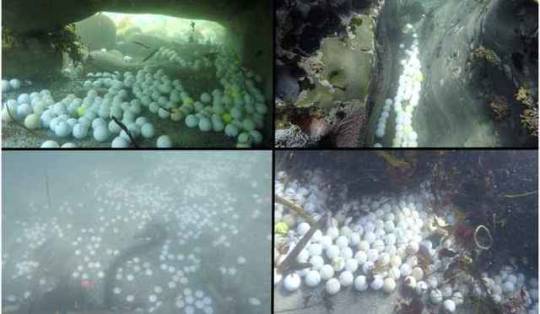
A teenage diver found tons of golf ball accumulating on the seafloor off Pebble Beach, near Carmel, California, a beach very close a Golf Club.
She, we the helpt of an expert, and volunters, removed 39,602 golf balls from intertidal and nearshore environments near Carmel, California, and combined with concurrent cleanup efforts, they report the retrieval of 50,681 balls, approximately 2.5 tons of debris.

- A harbor seal (Phoca vitulina) swimming near a dense aggregation of golf balls, and a threatened southern sea otter (Enhydra lutris nereis) handles a golf ball.
According to authors of the study, golf ball pollution is likely an underreported problem associated with coastal courses worldwide. Nearshore marine environments in close proximity to golf courses may similarly accumulate debris and should be surveyed to develop context-dependent mitigation strategies. Marine plastic pollution is a diffuse and seemingly intractable global problem, but the identification and remediation of known point sources of pollution is a tangible step in reducing the deleterious impacts of anthropogenic activity on marine systems
Photo: Several examples of dense aggregations of hundreds of golf balls encountered in the nearshore environment at the Pebble Beach study site.
Reference: Kewer et al., 2019. Quantifying marine debris associated with coastal golf courses Marine Pollution Bulletin.
[Photo description: dense aggregations of golf balls]
#Phoca vitulina#Enhydra lutris nereis#southern sea otter#harbor sea#benthic marine litter#marine litter#plastic pollution#plastic marine debris#Plastic Debris
3K notes
·
View notes
Photo

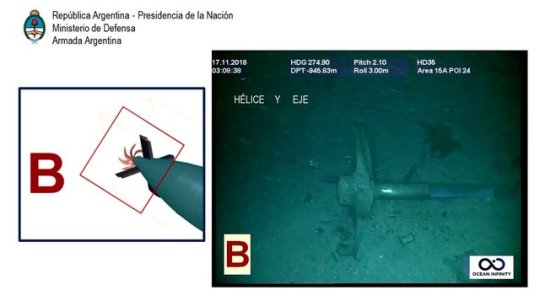

Using an Ocean Infinity AUV (Autonomous Underwater Vehicles), Argentina found the submarine ARA San Juan, the Argentine Navy submarine which was lost on 15 November 2017. The ARA San Juan had been found at 907 m depth, 500 km off Comodoro Rivadavia, in Southern Argentina.
Source: Argentine navy @Armada_Arg
more at BBC
#ARA San Juan#South Atlantic#patagonia#argentina#marine litter#marine debris#Benthic litter#benthic debris
42 notes
·
View notes
Photo

A deep sea anemone partially attached to a plastic bag in Shiribeshi Seamount, located in the east of the Okushiri Ridge, northeast Japan.
Photo: Japan Agency for Marine-Earth Science and Technology (JAMSTEC).
61 notes
·
View notes
Photo
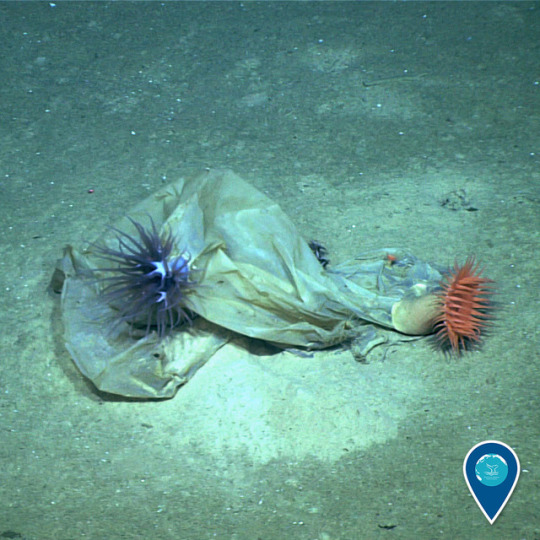
This week is Clean Beaches Week, the perfect time to think about how the plastic you use impacts the ocean and other ecosystem. Trash we discard here on land can make its way into the sea, where it travels into distant ecosystems.
This plastic bag, for example, was lying at the bottom of the Gulf of Mexico all the way at 5,250 feet – almost a mile down! By refusing, reducing, reusing, repurposing, and recycling, you can help reduce marine debris and negative impacts on wildlife throughout the ocean.
(Photo: NOAA)
[Image description: A white plastic bag lies crumpled on the sandy bottom of the ocean. Two anemones – one purple, one orange – are on the bag.]
174 notes
·
View notes
Photo

PLASTIC BAG RECORDED AT BOTTOM OF MARIANA TRENCH
The world’s deepest plastic bag has been found at the bottom of the Pacific Ocean’s Mariana Trench, at 10,898 m. Plastics are ubiquitous even at depths under 6000 m, most of them are single-use products.
The findings comes from over 5,000 separate dives using deep-sea remote vehicles (ROVs). But not only plastic was found, also metal, rubber, fishing gear, glass and various other man-made items. The study showed association of plastic debris with deep-sea biota, which was relatively frequency, 17% of debris images were found with at least one organisms. Researchers found entanglement of plastic bags in the cold seep communities.
According to japaneses researchers who conducted the study, plastic debris, particularly single-use products, has reached the deepest parts of the ocean. Whereas regulation on the production of single-use plastic and the flow of such debris into the coast are the only effective ways to prevent further threats to deep-sea ecosystems, successful management of plastic waste is possible through internationally harmonized practices based on scientifically sound knowledge.
Photo: JAMSTEC
Reference: Chiba et al., 2018. Human footprint in the abyss: 30 year records of deep-sea plastic debris. Marine Policy
2K notes
·
View notes
Link
It is gross how we treat our oceans, as true garbage dumps. Few years ago the tendency to throw garbage was common and usual, but as years passed we changed this view, now, what do we expect to see as we slowly accumulate space debris in the ocean, what is the limit?
16 notes
·
View notes
Photo
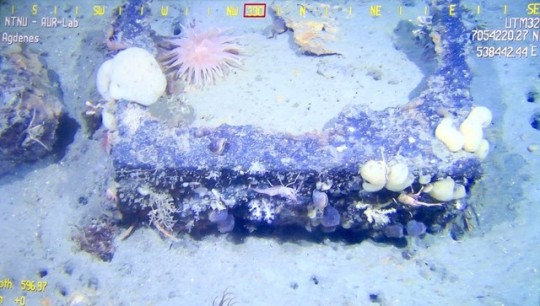

Pink anemones, white cauliflower coral and squat lobsters adorn an abandoned munitions box and bus, at 600 m depth, in Trondheim fjord , Norwegian Sea.
Photo: Nancy Bazilchuk/ NTNU
#marine debris#benthic marine debris#norway#marine pollution#oceans#science#sciblr#scienceblr#europe#atlantic
43 notes
·
View notes
Photo
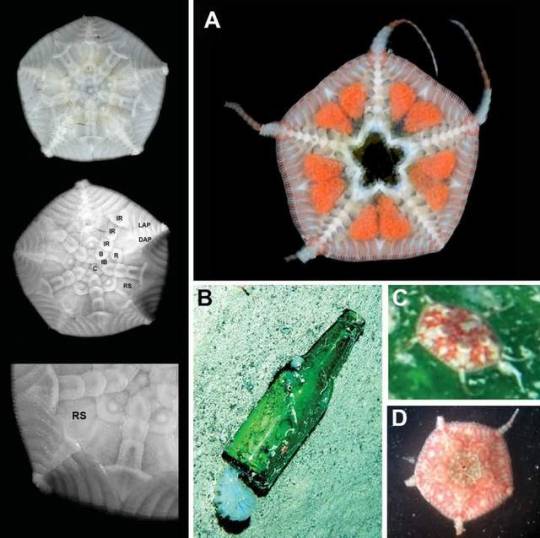
This brittle star is a new ophiuroid species, animals related to sea stars and sea urchins. Called Astrophiura caroleae, is described from off Curacao in the southern Caribbean, and from the western Gulf of Mexico, in depths of 244 to 434 meters.
Despite the finding of this new species, it is remarkable that it was found in the vicinity of benthic marine debris, as shown in the image, where the specimen used to described this species (holotype) was found on a discarded beer bottle, the specimen is that small red point on the green bottle.
Reference: Pawson, 2018. A new species of the remarkable brittle star genus Astrophiura (Echinodermata: Ophiuroidea) from the western Atlantic Ocean. Zootaxa.
#astrophiura caroleae#ophiuroidea#echinodermata#new species#animals#marine litter#marine science#benthic litter#benthic debris
49 notes
·
View notes